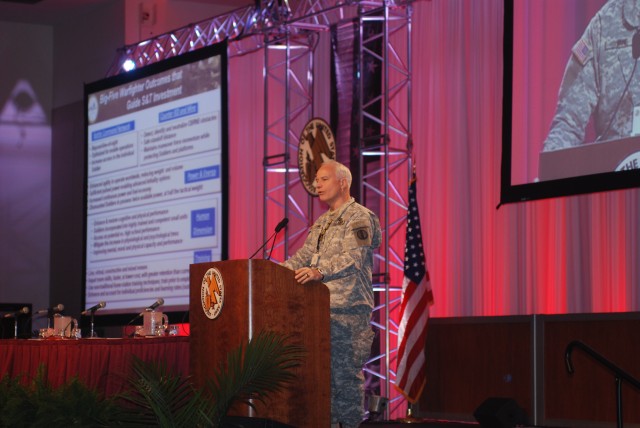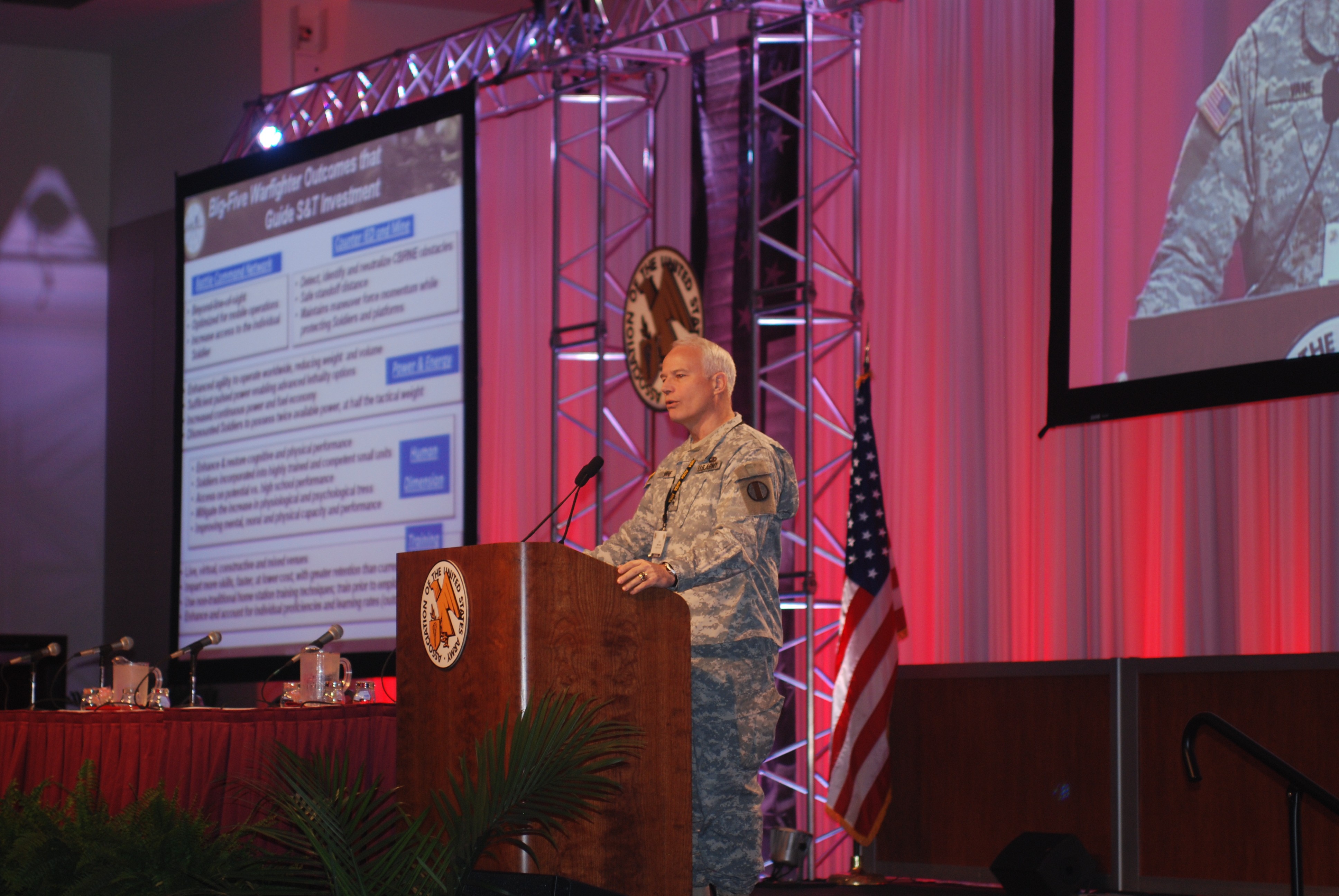
FORT LAUDERDALE, Fla. (TRADOC News Service, Feb. 25, 2009) - Lt. Gen. Michael A. Vane, director of the Army Capabilities Integration Center, gave a look inside the Army's force in the years to come at the Association of the United States Army's 2009 Winter Symposium.
Vane believes there are five keys in what the Army should look at to shape the force for the future. They are the battle command network; counter improvised explosive devices and mines; power and energy; human dimension; and training.
The Army field manual for operations, FM 3-0, directs that the Army is a commander-centric force. The battle command network is an important tool to becoming that force as outlined in the operations manual. BCN will allow commanders the ability to look beyond the line-of-sight and gives them increased access to the individual Soldier.
"We can't bring to that commander that same idea of what is going on in the battlefield that we can see from an unmanned aerial vehicle, the Soldier on the ground, or even what the logisticians see," said Vane. "We've got to be able to get to that and be able to do it on the move."
The Army has made great strides since the beginning of Operation Iraqi Freedom and Operation Enduring Freedom in countering the IED problem that Soldiers face. The director says that we have to get to a stand-off capability.
"We have received great support and direction from Lt. Gen. Thomas Metz, the director of the Joint Improvised Explosive Devise Defeat Organization," said Vane. They are helping the Army and all services address the problem with IEDs.
One major concern the ARCIC director says that the Army must address as it moves forward is power and energy. Improved power and energy sources will enhance the Army's ability to operate worldwide, reducing weight and volume, and allow the dismounted Soldier to possess twice the currently available power at half the tactical weight.
"We want to be able to get away from having generators that we drag behind all our trucks," said Vane. "If we are going to get down the road to helping solve some of our expeditionary challenges, we have to be able to have more power in the back of the vehicles we operate."
The former commander of U.S. Army Training and Doctrine Command, Gen. (Ret.) William S. Wallace, challenged the command to look at the human dimension - to look at designing our systems to focus on our Soldiers as the best decision-maker, the best shooter and the best sensor.
"Do we have systems we're designing that make the Soldier more effective on the system they are using'" Vane asked. "We need to use the power of industry, science and technology to make that Soldier more efficient."
Vane spoke of the use of robotics in the future force. He noted that there needs to be a few requirements for robots before they're completely integrated into the Army force structure. The director noted that robotics enable humans, not vice versa: humans shouldn't have to accommodate technology.
The director spoke of training as a part of the human dimension. As technology is being created to make the Soldier more lethal, we need to find the right way to train the Soldier on the equipment they will use. We're looking at how our Soldiers learn and need to adapt the equipment and training to make them more effective, said the director.
"We have lots of agencies, people and leaders to help the joint force commander," said Vane. "We have delivered solutions to more than 5,000 operational-needs statements to the field. We need to leverage warfighting forums plus feedback and innovations from recently deployed Soldiers to turn around solutions to the Soldier."

Social Sharing